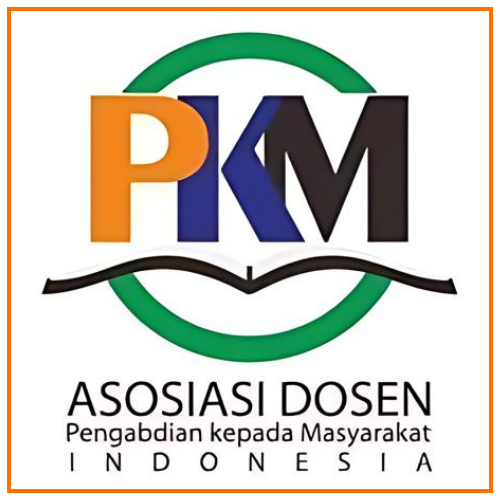Effective Vocabulary Teaching Strategies to Enhance EFL Learners' Reading Abilities: A Case Study
Abstract
Keywords: Vocabulary; Reading comprehension; Vocabulary teaching strategies.
Full Text:
PDFReferences
Alqahtani, M. (2015). The Importance of vocabulary in language learning and how to be taught. International Journal of Teaching and Education, 3 (3), 21-34.
Anjomshoa, L., & Zamanian, M. (2014). The effect of vocabulary knowledge on reading comprehension of Iranian EFL learners in Kerman Azad University. International Journal of Studies in English Language and Literature, 2 (5), 90-95.
Bromley, K. (2012). The next step in vocabulary instruction: Practical strategies and engaging activities that help all learners build vocabulary and deepen comprehension. USA: Scholastic.
Bronshteyn, K. C., & Gustafson, T. (2015). The acquisition of phrasal verbs in L2 English: A literature review. Linguistic Portfolios, 4 (8), 92-99.
Byon, A. S. (2012). Vocabulary learning strategies of advanced KFL learners: Using vocabulary journal assignment. The Korean Language in America, 17, 236-254.
Carrasquillo, A., & Segan, P. (1998). The teaching of reading in Spanish to the bilingual student. Mahwah, NJ: Lawrance Erlbaum Associates.
Chatrsimab, E. (2015). Authentic reading texts and vocabulary acquisition in EFL students. UK: Amazon.co.uk, Ltd: Marston Gate.
Folse, K. S. (2008). Six vocabulary activities for the English Language classroom. English Teaching Forum, (3), 12-21.
Grabe, W. (2004). Research on teaching reading. Annual Review of Applied Linguistics, 24, 44-49.
Grant, L., & Nation, P. (2006). How many idioms are there in English? International Journal of Applied Linguistics, 151, 1-14.
Graves, M. (2008). Instruction on individual words: One size does not fit all. In A. E. Farstrup & S. J. Samuels (Eds.), What research has to say about vocabulary instruction (pp. 56-79). Newark, DE: International Reading Association.
Gu, P.Y. (2003). Vocabulary learning in a second language: Person, task, context, and strategies. TESL-EJ, 7 (2), 1-26.
Johnson, S. (2011). Importance of SPSS in data presentation for dissertation. Retrieved October 22, 2019, from http://dissertation-help-uk.blogspot.com/2011/11/ importance-ofspss-in-data-presentation.html.
Kamhi, A. G. (2009). The case of the narrow view of reading. American SpeechLanguage- Hearing Association, 40, 174-177.
Khabiri, N., & Pakzad, M. (2012). The effect of teaching critical reading on EFL learners' vocabulary retention. The Journal of Teaching Language Skills, 4 (1), 73-106.
Klingner, J. K., Vaughn, S., & Boardman, A. (2015). Teaching reading comprehension to students with learning difficulties (2nd ed.). USA: The Guilford Press.
Kusnierek, A. (2016). The role of music and songs in teaching English vocabulary to students. World Scientific News, 43(1), 1-55.
Macaro, E. (2003). Teaching and learning a second language. New York: Continuum.
Marzano, R. J., Pickering, D. J., & Heflbower, T. (2011). The highly engaged classroom. USA: Marzano Research Laboratory.
Marzuki, A. G., Santiana, A. K., Alek, N. F., Darmawati, B., & Bin-Tahir, S. Z. The Teaching of EFL Vocabulary through Anticipatory Learning Strategy in Islamic Higher Education Context in Indonesia.
McShane, S. (2005). Applying research in reading instruction for adults: First steps for teachers. New Hamphire: Portsmouth.
Mohammednejad, S., & Nikdel, H. (2012). Reactivating EFL learners' word knowledge by means of two techniques: Flashcards versus wordlists. International Journal of Linguistics, 4 (4), 393-406.
Nation, P. (2001). Teaching vocabulary. Asian EFL Journal: The EFL Professionals' written Forum. Retrieved from: http://www.asian-efl-journal.com/ sept_05_pn.pdf.
National Reading Panel. (2000). Teaching children to read: An evidence based assessment of the scientific research literature on reading and its implications for reading instruction. Washington, DC: National Institute of Child Health and Human Development.
Nuttal, C. (2005). Teaching reading skills in a foreign language. UK: MacMillan Education.
Oakhill, J., Cain, k., & Elbro, C. (2015). Understanding and teaching reading comprehension. London and New York: Routledge.
Read, J. (2000). Assessing vocabulary. UK: Cambridge University Press.
Reutzel, D. R., & Cooter, R. B. (2008). Teaching children to read: The teacher makes the difference (5th ed.). Upper Saddle River. USA: Merill Prentice Hall.
Richards, J. C., & Schmidt, R. (2002). Longman dictionary of language teaching and applied linguistics (3rd ed.). England: Pearson Education Limited.
Serafini, F. (2007). Rethinking reading comprehension. The Michigan Reading Association, 189-202.
Shaptoshvili, S. (2002). Vocabulary practice games. English Teaching Forum, 34-37.
Shen, W. W. (2003). Current trends of vocabulary teaching and learning strategies for EFL settings. Journal of Humanities and Social Sciences, (7), 187-224.
Sitompul, E. Y. (2013). Teaching vocabulary using flashcards and word list. Journal of English and Education, 1(1), 52-58.
Slimani, S. (2005). Failure of achievement in developing the reading skill in Comet textbook. University of Beskra, Algeria: MA dissertation.
Snow, C. (2002). Reading for understanding: Toward an R and D program in reading comprehension. Santa Monica: RAND.
Taffy, E. R. (n. d.). Vocabulary teaching and learning. Wright Group LEAD 21. Retrieved from http://www.doe.in.gov/sites/default/ files/curriculum/research-base-vocabulary.pdf.
Tenkersley, k. (2005). Literacy strategies for grades 4-12: Reinforcing the threads of reading. USA: Association for Supervisor and Curriculum Development (ASCD).
Vacca, J. A. L., Vacca, R. T., Gove, M. K., Burkey, L. C., Lenhart, L. A., & McKeon, C. A. (2006). Reading and learning to read (6th ed.). USA: Pearson Education, Inc.
Wilkins, D. A. (1972). Linguistics in language teaching. UK: MA, MIT Press.
Yu-Han, Ma., & Wei-ying, L. (2015). A study on the relationship between English reading comprehension and English vocabulary knowledge. Education Research International. Retrieved from http:// dx.doi.org/10.1155/2015/209154.
Zhang, L. J & Annual, S. B. (2008). The role of vocabulary in reading comprehension: The case of secondary school students learning English in Singapore. RELC Journal, 39 (1), 51-76.
DOI: https://doi.org/10.37058/jelita.v1i2.5196
Refbacks
- There are currently no refbacks.








Journal of Education, Language Innovation, and Applied Linguistics
Lembaga Penelitian, Pengabdian Kepada Masyarakat dan Penjaminan Mutu Pendidikan (LP2M-PMP) Universitas Siliwangi
Jalan Siliwangi Number 24, Kota Tasikmalaya - 46115
West Java, Indonesia










